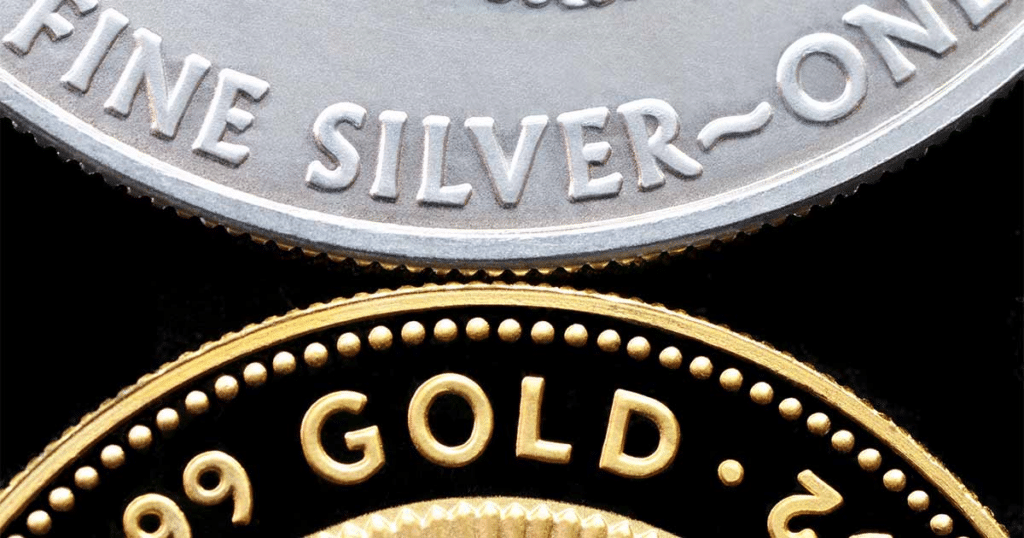
Bimetallism in the United States is rooted in the Coinage Act of 1792, which established the U.S. Mint to coin gold and silver into money. This effectively created a bimetallic standard, where the value of the monetary unit was defined as equivalent to a determined quantity of gold and silver, with a fixed exchange rate between them.
At the time, the move to bimetallism over monometalism struck up some heated debates. The debate over bimetallism intensified during the latter half of the 19th century, particularly after the Civil War. Advocates for free silver wanted to expand the money supply by allowing the unlimited minting of silver coins to counteract deflation and help debt-ridden farmers. Opponents who supported gold monometallism argued that this would devalue the currency and lead to inflation.
Bimetallism Standard
In the context of the United States, bimetallism played a significant role in monetary policy. The U.S. adopted a bimetallic standard with the Coinage Act of 1792, which fixed the silver-to-gold ratio at 15:1. Silver and gold were used to back the currency and could be brought to the mint and coined into money. However, due to the fluctuations in the market values of these metals, the fixed ratio was often in discord with their actual value, which led to one of the metals being favored over the other.
The End of Bimetallism
The Bland-Allison Act of 1878 and the Sherman Silver Purchase Act of 1890 were legislative efforts to increase silver’s role in the economy, but more was needed to establish a stable bimetallic system. The issue became a major political battle, epitomized by William Jennings Bryan’s “Cross of Gold” speech during his 1896 presidential campaign, which was an appeal to adopt bimetallism and inflate the currency.
The bimetallic standard in the U.S. was effectively ended with the adoption of the Gold Standard Act in 1900. However, the controversies surrounding bimetallism continued to influence American monetary policy and politics until the 20th century, when the move towards a fiat currency system began, culminating in the abandonment of the gold standard in 1971 under President Nixon’s administration. Since then, the debate over bimetallism has primarily become historical, as physical commodities like gold or silver no longer back contemporary currencies.
What is the Gold-Silver Ratio?
Historically, the gold and silver ratio fluctuated widely. In the late 19th century, the U.S. government set the ratio at approximately 16:1 with the Coinage Act of 1834 and later 15:1 in the Coinage Act of 1792, which was more in line with the global average. However, market forces have since determined the ratio, leading to significant variations over time based on supply and demand dynamics, changes in industrial use, and investor sentiment towards these metals.
The gold-silver ratio currently represents the amount of silver needed to purchase one ounce of gold. It is a financial tool investors, traders, and economists use to assess the relative value of these two precious metals. Today, the ratio is much larger than the historical 15:1. Now, it is roughly 67:1. Often, the gap is even larger.
The Free Silver Movement
“Free Silver” was a major economic policy issue in late 19th-century America and became the central theme of the 1896 and 1900 presidential elections. It refers to the unlimited coinage of silver at a fixed ratio to gold. Proponents of Free Silver wanted to expand the money supply with silver to promote economic growth and inflation, making it easier to pay off debts typically contracted in gold.
The movement was prevalent among farmers and working-class Americans suffering from low prices for their goods, heavy debts, and deflationary pressure. The deflation of the late 19th century was especially hard on farmers with debts fixed in dollar terms but incomes that fell as prices dropped. Silver, being more abundant than gold, would increase the money supply and thus raise prices, easing the burden of debt repayment.
Free Silver advocates opposed the Gold Standard, which they felt supported deflation and contributed to economic inequality by concentrating wealth in the hands of bankers and industrialists. They believed that bimetallism (using gold and silver as the basis for currency) would bring financial relief to the working population.
William Jennings Bryan and the Cross of Gold Speech
The issue was highly contentious and split the Democratic Party into the “gold Democrats” (who supported the gold standard) and the “silver Democrats” (who supported Free Silver). William Jennings Bryan emerged as the champion of the Free Silver movement, famously declaring in his “Cross of Gold” speech, “You shall not crucify mankind upon a cross of gold.”
This movement symbolized the struggle between the interests of the agrarian and working-class Americans and the Eastern banking and business elites. Despite the fervor of its supporters, the Free Silver movement declined after the 1896 election, as the discovery of new gold deposits and the increasing adoption of gold as the international standard rendered the argument for silver coinage less persuasive. The movement had all but ended when the U.S. formally adopted the Gold Standard in 1900.




